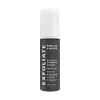What's inside
What's inside
 Key Ingredients
Key Ingredients

 Benefits
Benefits

 Concerns
Concerns

 Ingredients Side-by-side
Ingredients Side-by-side

Glycerin
HumectantSilica
AbrasiveWater
Skin ConditioningGlycolic Acid
BufferingPropanediol
SolventSodium Hydroxide
BufferingPentylene Glycol
Skin ConditioningPolyglyceryl-10 Tristearate
Skin ConditioningLactic Acid
BufferingCI 77891
Cosmetic ColorantSynthetic Beeswax
Emulsion StabilisingPyrus Malus Fruit Extract
Skin ConditioningSalicylic Acid
MaskingTetrahexyldecyl Ascorbate
AntioxidantAscorbic Acid
AntioxidantGlutathione
Urea
BufferingYeast Amino Acids
HumectantTrehalose
HumectantInositol
HumectantTaurine
BufferingBetaine
HumectantHydrolyzed Opuntia Ficus-Indica Flower Extract
AbrasiveMaltodextrin
AbsorbentPhospholipids
Skin ConditioningPolyacrylate Crosspolymer-6
Emulsion StabilisingCellulose Acetate
Boron Nitride
AbsorbentPropylene Glycol Stearate
Skin ConditioningSodium Acrylates Copolymer
Polyglyceryl-10 Stearate
Skin ConditioningHydrogenated Polyisobutene
EmollientHelianthus Annuus Seed Oil
EmollientAcrylates/Ammonium Methacrylate Copolymer
Acrylates/C10-30 Alkyl Acrylate Crosspolymer
Emulsion StabilisingSorbitol
HumectantXanthan Gum
EmulsifyingProtease
ExfoliatingLipase
Skin ConditioningGold
Cosmetic ColorantPhenoxyethanol
PreservativeLimonene
PerfumingParfum
MaskingCI 15510
Cosmetic ColorantCI 19140
Cosmetic ColorantTocopherol
AntioxidantGlycerin, Silica, Water, Glycolic Acid, Propanediol, Sodium Hydroxide, Pentylene Glycol, Polyglyceryl-10 Tristearate, Lactic Acid, CI 77891, Synthetic Beeswax, Pyrus Malus Fruit Extract, Salicylic Acid, Tetrahexyldecyl Ascorbate, Ascorbic Acid, Glutathione, Urea, Yeast Amino Acids, Trehalose, Inositol, Taurine, Betaine, Hydrolyzed Opuntia Ficus-Indica Flower Extract, Maltodextrin, Phospholipids, Polyacrylate Crosspolymer-6, Cellulose Acetate, Boron Nitride, Propylene Glycol Stearate, Sodium Acrylates Copolymer, Polyglyceryl-10 Stearate, Hydrogenated Polyisobutene, Helianthus Annuus Seed Oil, Acrylates/Ammonium Methacrylate Copolymer, Acrylates/C10-30 Alkyl Acrylate Crosspolymer, Sorbitol, Xanthan Gum, Protease, Lipase, Gold, Phenoxyethanol, Limonene, Parfum, CI 15510, CI 19140, Tocopherol
 Reviews
Reviews

Ingredients Explained
These ingredients are found in both products.
Ingredients higher up in an ingredient list are typically present in a larger amount.
Salicylic Acid (also known as beta hydroxy acid or BHA) is a well-known ingredient for treating skin that struggles with acne and clogged pores. It exfoliates both the skin's surface and deep within the pores to help clear out buildup, control oil, and reduce inflammation.
Unlike AHAs (alpha hydroxy acids), salicylic acid is oil-soluble. This allows it to penetrate into pores which makes it especially effective for treating blackheads and preventing future breakouts.
Salicylic acid is also known for its soothing properties. It has a similar structure to aspirin and can calm inflamed or irritated skin, making it a good option for acne-prone skin that is also sensitive.
Concentrations of 0.5-2% are recognized by the U.S. FDA as an over-the-counter topical acne product.
It can cause irritation and/or dryness if one's skin already has a compromised moisture barrier, so it's best to focus on repairing that before introducing this ingredient into your routine.
While salicylic acid does not increase sun sensitivity, it’s still important to wear sunscreen daily to protect your skin.
If you are looking for the ingredient called BHA or Butylated Hydroxyanisole, click here.
Learn more about Salicylic AcidSodium Hydroxide is also known as lye or caustic soda. It is used to adjust the pH of products; many ingredients require a specific pH to be effective.
In small amounts, sodium hydroxide is considered safe to use. However, large amounts may cause chemical burns due to its high alkaline.
Your skin has a natural pH and acid mantle. This acid mantle helps prevent harmful bacteria from breaking through. The acid mantle also helps keep your skin hydrated.
"Alkaline" refers to a high pH level. A low pH level would be considered acidic.
Learn more about Sodium HydroxideWater. It's the most common cosmetic ingredient of all. You'll usually see it at the top of ingredient lists, meaning that it makes up the largest part of the product.
So why is it so popular? Water most often acts as a solvent - this means that it helps dissolve other ingredients into the formulation.
You'll also recognize water as that liquid we all need to stay alive. If you see this, drink a glass of water. Stay hydrated!
Learn more about Water